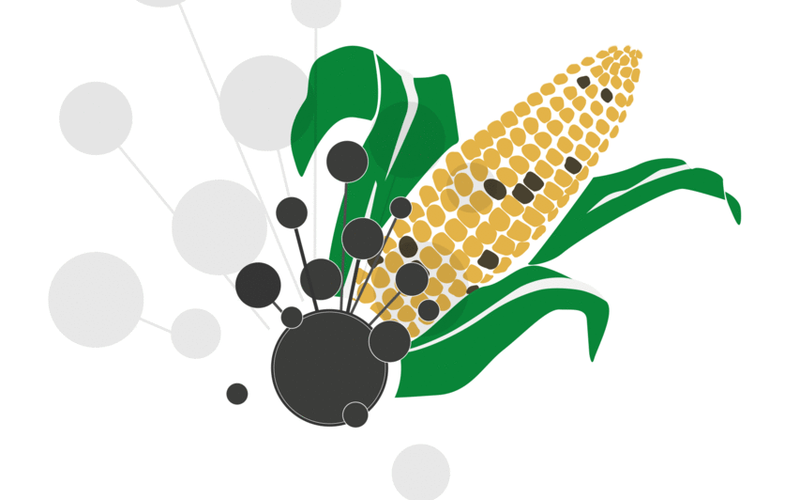Biomin released it Mycotoxin Survey Q2 2021 with a review of the occurrence of major mycotoxins in the first half of 2021 (January to June). In total 47,611 analyses were conducted on 10,075 finished feed and raw commodity samples originating from 68 countries.
North America
Risk in North America stays severe. DON is still one of the main concerns in all commodities. It was present in 69% of all samples (average of positives 1,044 ppb).
In corn kernels, DON prevalence is 72% with an average concentration of positive samples reaching 1,449 ppb. However, in corn FUM has the highest prevalence (73%), with a high average concentration of 2,050 ppb. A high average concentration of 297 ppb is also reported for ZEN in corn (prevalence 35%).
Central America
Central America is at extreme risk as 77% of all samples tested positive for FUM. These positive samples contained, on average, 1,049 ppb FUM. Contamination with FUM is even higher in corn kernel samples (abundance 98%, average of positives 1,671 ppb). In addition, 86% of corn samples contained at least one mycotoxin. The second most prevalent mycotoxin was DON, occurring frequently in all samples tested (72%) and particularly in corn (87%).
South America
The risk in this region is severe. Fusarium mycotoxins are the most prevalent, with FUM present in 66% of all samples, followed by DON (51%) and ZEN (42%). Aflatoxin was found in 30% of the samples (average of positives 7 ppb). Risk to livestock is mainly due to DON and FUM concentrations. Corn shows a high abundance of FUM (83%, average of positives 1,569 ppb) and DON (50%, average of positives 529 ppb), and 96% of corn samples contained at least one mycotoxin.
Europe
Risk in Europe ranges from moderate to severe. The most prevalent mycotoxin is still DON (53%), followed by ZEN (50%) and FUM (42%). It occurred in different raw materials that were tested, including 66% of corn samples testing positive for this mycotoxin with an average of positives of 856 ppb. Apart from corn, straw and corn silage are heavily affected by DON (51% and 75% prevalence, respectively). The average of positive concentrations is in the same range as for corn with 820 ppb in straw and 725 ppb in corn silage. Central Europe is the most affected sub-region. In this region, 89% of corn samples tested positive for DON and showed a high average concentration of 1,076 ppb.
Asia Pacific
Risk is extreme in South Asia, China and Taiwan. In Southeast Asia and East Asia, the risk is severe. Compared to the same time period last year (January-June 2020), the abundance of Afla, T-2 toxin and OTA increased. Fusarium mycotoxins are most prevalent and are the main risk for livestock. FUM occurred in 90% of corn samples, and the average stayed high with 2,049 ppb. In corn, DON, ZEN and Afla also threaten animal health. DON occurred in 84% of samples (average of positives 1,013 ppb), ZEN in 73% (average of positives 243 ppb) and Afla in 25% (117 ppb). 95% of corn samples contained at least one mycotoxin. Afla shows particularly high concentrations in corn and finished feed in South and Southeast Asia. In South Asia, Afla was present in 95% of finished feed samples (average of positives 39 ppb). Also, Ochratoxin A was very abundant in this subregion of Asia.
Middle East
The Middle East shows severe risk, mainly due to the high abundance of Fusarium toxins. Most abundant in all samples is FUM (93%), followed by ZEN (70%), DON (61%) and Afla (27%). Risk to animal species is mainly due to DON and ZEN (average of positives 744 ppb and 112 ppb, respectively). Compared to the same time period last year (January-June 2020), the abundance of Afla, OTA and ZEN increased. Of all samples tested in the first half of 2021, 83% contained more than one mycotoxin.
Africa
In Sub-Saharan Africa, the risk is severe. Fusarium mycotoxins are highly abundant: DON is present in 71% of the samples, followed by FUM (65%) and ZEN (54%). Compared to January to June 2020, we see an increase in the abundance of all six well-known main mycotoxins. For animal health, DON is the highest concern with its high abundance and an average positive concentration of 701 ppb. South African corn shows particularly high abundance and contamination levels with DON in corn (abundance 89%, average of positives 1,078 ppb).
Download the survey results here.










